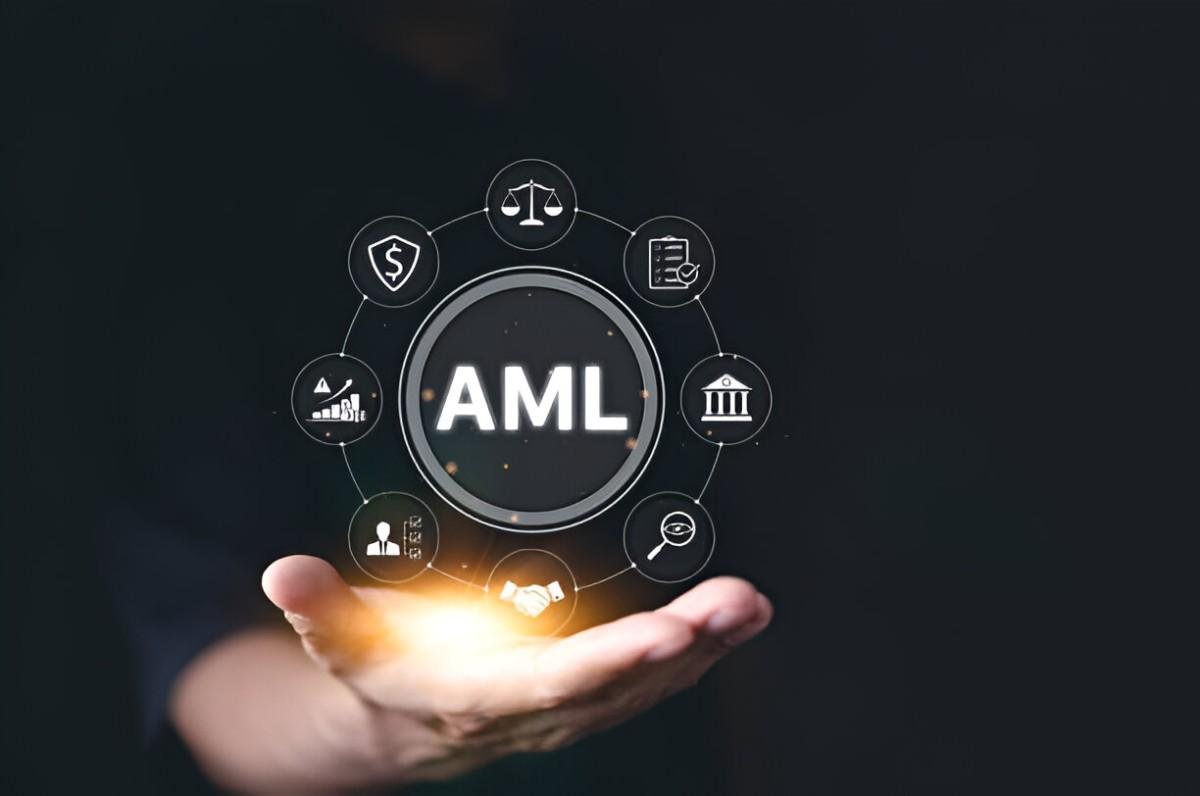Cryptocurrency has grown beyond a niche market into a significant financial sector. While the allure of decentralized finance (DeFi) and blockchain innovation is undeniable, it has also raised serious concerns regarding its use in illicit activities. As a result, the concept of Anti-Money Laundering (AML) in the cryptocurrency world has become a critical area of focus. In this article, I’ll walk you through AML cryptocurrency, its importance, the mechanisms in place, and its challenges. I will also highlight practical examples and calculations to make this complex topic more accessible.
Table of Contents
What Is AML Cryptocurrency?
AML in the cryptocurrency context refers to the set of regulations and practices designed to prevent financial crimes such as money laundering and terrorist financing. The goal is to monitor and regulate cryptocurrency transactions to ensure that they are not used to conceal illegal activity.
Money laundering, the process of hiding illegally gained funds through legitimate transactions, is a significant problem that AML laws aim to curb. Cryptocurrencies, with their relatively anonymous nature, provide a potential channel for money laundering activities. Because of this, many governments and financial institutions have implemented AML policies to prevent such actions.
Cryptocurrency exchanges and businesses must comply with AML regulations to ensure their platforms aren’t misused. However, despite these efforts, the anonymous and decentralized nature of crypto presents unique challenges.
The Importance of AML in Crypto
To understand why AML is essential, let’s first explore the potential risks that cryptocurrencies pose. Although cryptocurrencies offer legitimate uses, they also enable the following illicit activities:
- Money Laundering: Criminals use cryptocurrencies to move illicit funds across borders, exploiting the lack of centralized control.
- Terrorist Financing: Because of their relative anonymity, cryptocurrencies can be used to fund terrorism without detection.
- Fraud and Ponzi Schemes: The crypto space has been ripe for fraudulent schemes, where bad actors deceive investors and launder the proceeds.
AML regulations are a means of protecting the integrity of the financial system by reducing the risk of these activities. Without AML compliance, the crypto market could become a haven for criminals, which would ultimately undermine its legitimacy.
Key Components of AML in Cryptocurrency
I want to walk you through the core elements of AML compliance in the cryptocurrency space. These components ensure that transactions are scrutinized, and suspicious activity is flagged.
1. Know Your Customer (KYC)
KYC refers to the process where cryptocurrency exchanges or platforms verify the identity of their users. This is a standard practice in the banking sector, and it has been adopted by crypto platforms to prevent money laundering.
KYC involves several steps:
- Identity Verification: Users are required to provide personal information, such as name, address, and date of birth.
- Document Verification: Users must submit identification documents like passports or driver’s licenses.
- Ongoing Monitoring: Platforms continually monitor transactions to ensure that there is no suspicious activity.
2. Transaction Monitoring
Crypto platforms use algorithms and artificial intelligence to monitor transactions in real-time. These systems analyze transaction patterns and flag any that deviate from the norm. For instance, a user moving a large sum of money from a new account could raise a red flag.
3. Suspicious Activity Reporting (SAR)
If an exchange detects suspicious activity, it is required by law to report this to the relevant authorities. These reports help regulators track potential criminal activity and identify money laundering schemes.
4. Record Keeping
Cryptocurrency platforms are required to maintain records of transactions and customer identities for a certain period. These records can be used for investigations if suspicious activity is detected.
The AML Process in Crypto: A Step-by-Step Breakdown
To make this clearer, let’s look at the general process involved in AML compliance on a crypto exchange:
| Step | Action | Purpose |
|---|---|---|
| Step 1: Registration | A user creates an account on a crypto platform. | Gather initial user information. |
| Step 2: KYC Verification | User provides identity documents. | Verify user identity to prevent fraud. |
| Step 3: Deposit Monitoring | Platform monitors incoming deposits for any irregularities. | Detect potential suspicious transactions. |
| Step 4: Transaction Monitoring | User conducts transactions, monitored for unusual behavior. | Identify signs of money laundering. |
| Step 5: Reporting | If necessary, suspicious activities are reported to authorities. | Comply with regulatory requirements. |
| Step 6: Ongoing Monitoring | The platform continues to monitor the user’s activity for any suspicious actions. | Ensure the user is not engaged in illicit activities. |
AML Cryptocurrency Challenges
While AML regulations are critical, implementing them in the cryptocurrency market is not without its challenges.
1. Decentralization and Anonymity
Cryptocurrency’s decentralized nature means that there is no central authority overseeing transactions. This anonymity can make it difficult to trace funds and detect illicit activity. While KYC and transaction monitoring can reduce this risk, they are not foolproof.
2. Cross-Border Transactions
Cryptocurrencies can be transferred across borders without requiring the approval of traditional banks. This creates a challenge for regulators trying to track and prevent illegal transfers between countries.
3. Regulatory Uncertainty
The regulatory landscape for cryptocurrencies is constantly evolving. Different countries have different approaches to AML, which can create confusion for both users and businesses. Some countries may have stricter regulations, while others are more lenient.
4. Lack of Standardization
There is no universal standard for AML regulations in the crypto space. Each platform and jurisdiction may have different requirements and procedures, making it difficult for global businesses to remain compliant.
Practical Example: How AML Works in Action
Let’s break down a practical example of how AML processes work using a hypothetical scenario.
Scenario:
A user, Alice, creates an account on a crypto exchange. She submits her KYC documents, and they are verified. Alice then deposits 100 BTC (Bitcoin) into her account from an anonymous wallet. The platform’s monitoring system detects this as unusual activity because the wallet has been linked to known fraudulent activity.
Step-by-Step Breakdown:
| Step | Action | Outcome |
|---|---|---|
| Step 1: Deposit | Alice deposits 100 BTC from an anonymous wallet. | The system flags this as suspicious. |
| Step 2: Transaction Monitoring | The system compares this deposit with Alice’s transaction history. | It detects that Alice has never conducted such a large transaction. |
| Step 3: Report | The platform reports the transaction to authorities. | Authorities investigate the source of the funds. |
| Step 4: Conclusion | If Alice is found to be involved in illegal activity, her account may be frozen. | The funds are seized, and Alice’s account is suspended. |
The Future of AML in Cryptocurrency
The future of AML in the cryptocurrency space is likely to see increased regulation and more sophisticated technologies. Governments around the world are working to create a global framework for regulating cryptocurrencies and ensuring they are not used for illegal purposes. Blockchain analytics tools will continue to improve, making it easier to trace illicit transactions across decentralized networks.
I believe that as crypto evolves, so will the methods of combating illicit activity. The goal should always be to strike a balance between maintaining the decentralized ethos of cryptocurrencies and protecting the financial system from abuse.
Conclusion
AML compliance in cryptocurrency is essential to ensuring the legitimacy and safety of the crypto market. As the crypto industry grows, the need for stronger AML measures will only increase. While there are challenges, such as decentralization and regulatory uncertainty, the crypto world is adapting. With continued innovation and cooperation between regulators, platforms, and users, we can create a safer environment for everyone involved.
I hope this article has provided you with a clear understanding of AML in cryptocurrency. It’s a complex but crucial aspect of the crypto world that helps safeguard its future. As the sector evolves, AML will undoubtedly play an even more significant role in shaping its development.





